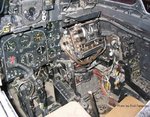A4K
Brigadier General
Cool, we'll work on this Mike!
Edit post:
Just found this: http://www.pavlamodels.cz/katalogy/detail.php?k=cockpits&c=C72109&styl=styly.css. Designed for the Cyber Hobby kit, but should fit yours with a little modification.
Maybe better for you just to grab this for this build, everything's in there!
If you still do want to get the canopy set anyway, we'll talk further on that.
Evan
Edit post:
Just found this: http://www.pavlamodels.cz/katalogy/detail.php?k=cockpits&c=C72109&styl=styly.css. Designed for the Cyber Hobby kit, but should fit yours with a little modification.
Maybe better for you just to grab this for this build, everything's in there!
If you still do want to get the canopy set anyway, we'll talk further on that.
Evan
Last edited:


![000_0365[1].jpg](/forum/data/attachments/188/188259-b78de04ed398410d3efe0d62f5bf7ef4.jpg)
![000_0366[1].jpg](/forum/data/attachments/188/188260-1c8cd0f0583c8e8b763890d0b6c98fdc.jpg)
![000_0371[1].jpg](/forum/data/attachments/188/188303-0012501877740e60074c6bb922f7ba22.jpg)
![000_0372[1].jpg](/forum/data/attachments/188/188304-2a47246f483e1dfda96adddd44f46442.jpg)